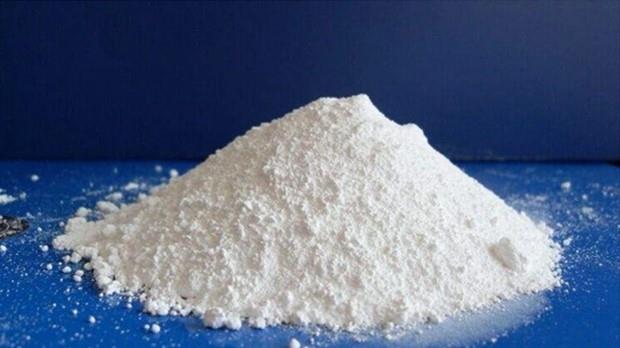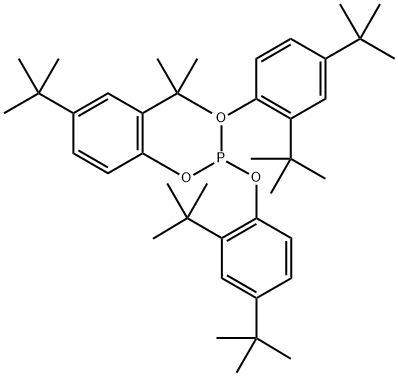Antioxidant 168: A Plastic Additive in Polypropylene and Polyethylene
May 23,2023
General Description
Antioxidant 168 is a plastic additive mainly incorporated into Polypropylene (PP) and Polyethylene (PE) as an antioxidant. It has been used in food packaging , supposedly explaining its detection in frozen vegetable.

Figure 1. Properties of Antioxidant 168
Applications and Degradation
Antioxidant 168 is a plastic additive used as an antioxidant in polyolefin with concentration ranging from 0.004 to 3% (wet weight). Oxidation from the reduced form to the oxidized form is a common phenomenon for this molecule, thus making the protection of the polymer against oxidation possible. In studies concerning Antioxidant 168 from food packaging, both forms are usually targeted. According to Yang et al. (2016) oxidation of Antioxidant 168 can occur either during the extrusion of the polymer, during storage in the dark or during exposure to UV; the latter being the fastest pathway. Here it is not possible to assess whether the oxidation process of Antioxidant 168 in the laboratory has occurred (i) during storage in the dark as laboratory reagents were stocked in safety cabinets or in the fridge straight from their delivery at the laboratory until their use or (ii) during the production and transport process of both the packaging and the reagent. It was recently suggested that when studying antioxidants, the oxidized form should be primarily targeted as the reduced form will react with oxygen and will not accumulate in the environment. This is confirmed in the present study as the oxidized Antioxidant 168 was systematically detected in quantifiable amounts whereas its reduced form was under the limit of detection in some laboratory reagents.1-2

Figure 2. Transformation product of Antioxidant 168 obtained after oxidation and hydrolysis
Antioxidant 168 leached out of food packaging in contact with oil and its oxidized form, the tris(2,4-ditert-butylphenyl) phosphate, leached from PE placed in stirred water. Both forms were also detected in plastic pieces used in oyster farming or ingested by seabirds and detected in indoor dust. Antioxidant 168 can be also hydrolysed over time in the aquatic system and one of its degradation products, the 2,4-ditert-butylphenol has been found in plastics collected on Korean beaches. A second degradation product (bis(2,4-ditert-butylphenyl) hydrogen phosphate) was reported to impair growth of human cells in culture while Chinese hamster ovary cell lines are also sensitive to this chemical. Oxidized Antioxidant 168 has been detected in one laboratory solvent, likely the result of leaching during chemical storage in the laboratory, it appears necessary to perform an inventory of potential Antioxidant 168 contaminations in the laboratory workplace prior to any leaching study, such as those using in vitro simulated gut conditions as already used to study the desorption of oestrogenic chemicals from plastic items. In the present paper, the reduced (tris(2,4-ditert-butylphenyl) phosphite) and the oxidized (tris(2,4-ditert-butylphenyl) phosphate) forms of Antioxidant 168 were quantified in both the laboratory chemicals used to mimic in vitro gut conditions and their containers to account for potential contamination.3-4
Preparation
The preparation method of Antioxidant 168 comprises the following steps: (1) adding 2, 4-di-tert-butylphenol, a solvent and a resin catalyst into a reaction kettle, and heating while stirring at a constant speed; dropwise adding phosphorus trichloride into a reaction kettle at a constant speed, and after the reaction is finished, adding resin as a neutralizer to neutralize the reaction solution to be neutral; (2) filtering the reaction solution obtained in the step (1) to filter out solid resin; treating the filtrate to obtain an Antioxidant 168 product; (3) using a part of the resin filtered in the step (2) as a catalyst for the synthesis reaction of the next batch; the rest is regenerated and used as a neutralizer for reuse. The catalyst used in the invention can be simply, conveniently, quickly and thoroughly separated from the system after the reaction is finished, can be continuously used, does not generate solid waste, can effectively improve the quality of the Antioxidant 168 product, and reduces the environmental pollution.5
References
1. European Chemicals Agency, 2019. Mapping exercise – plastic additives initiative [WWW document]
2. Hahladakis, J.N., Velis, C.A., Weber, R., Iacovidou, E., Purnell, P., 2018. An overview of chemical additives present in plastics: migration, release, fate and environmental impact during their use, disposal and recycling. J. Hazard. Mater. 344, 179–199.
3. Cherif Lahimer, M., Ayed, N., Horriche, J., Belgaied, S., 2017. Characterization of plastic packaging additives: food contact, stability and toxicity. Arab. J. Chem. 10, S1938–S1954.
4. Dopico-García, M.S., López-Vilariñó, J.M., González-Rodríguez, M.V., 2007. Antioxidant content of and migration from commercial polyethylene, polypropylene, and polyvinyl chloride packages. J. Agric. Food Chem. 55, 3225–3231.
5. CN110590834A
- Related articles
- Related Qustion
- Antioxidant RIANOX 168 Dec 8, 2021
RIANOX 168 (Old name: THANOX 168) is a phosphite antioxidant by Rianlon. It offers hydrolytic stability, improved performance stability of the polymer, maintenance of color properties and processing stability.
Ammonium formate is obtained by neutralizing formic acid and ammonia. It is soluble in water and ethanol, and its aqueous solution is acidic.....
May 23,2023APIp-coumaric acid, a phytochemical and nutraceutical, can be found in several edible plants like tomatoes, carrots, and cereals. It is widely present in the cell walls of graminaceous plants and can reduce LDL peroxidation.....
May 23,2023Catalyst and AuxiliaryAntioxidant 168
31570-04-4You may like
- Crystal Structure of Titanium oxide (Ti3O5)
Jun 14, 2024
- Crystal Structure of Gallium arsenide
Jun 14, 2024
- What is Tetracaine Hydrochloride Ophthalmic Solution
Jun 14, 2024
- ANTIOXIDANT TRUELICHT AN168
-

- $0.00 / 1KG
- 2024-06-12
- CAS:31570-04-4
- Min. Order: 1drums
- Purity: 98%
- Supply Ability: 20 tons
- Antioxidant 168
-

- $0.00 / 1kg
- 2024-06-11
- CAS:31570-04-4
- Min. Order: 1kg
- Purity: 99%
- Supply Ability: 50000kg
- antioxidant 168
-

- $10.00 / 1kg
- 2024-05-22
- CAS:31570-04-4
- Min. Order: 1kg
- Purity: 99%
- Supply Ability: 20ton




